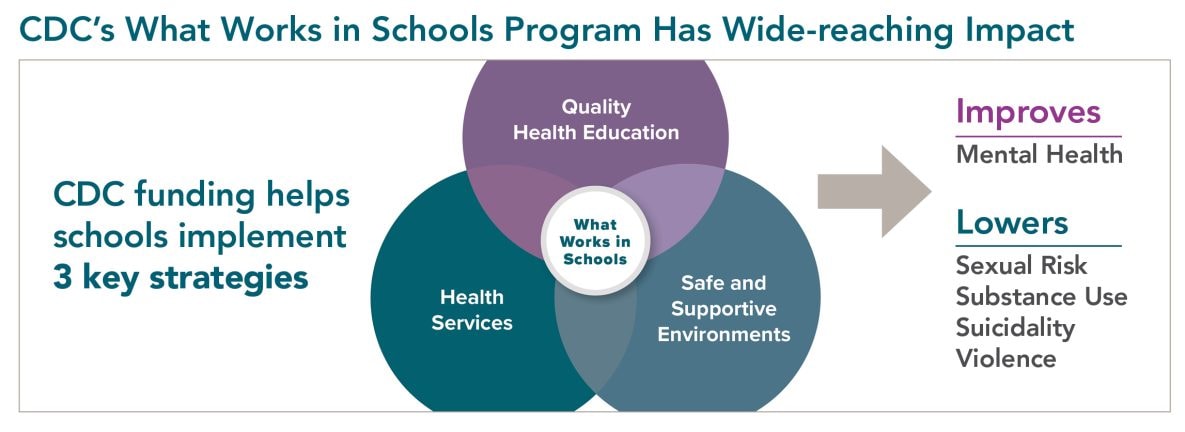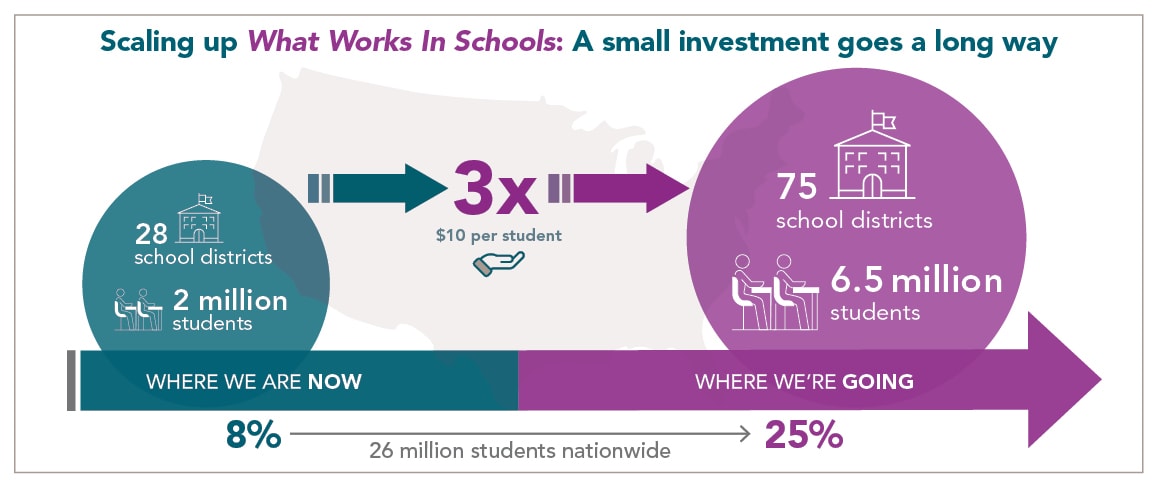What Works in Schools Makes a Difference
Supporting Adolescent Health Has Never Been More Important
Over the last decade, we have seen an alarming increase in the number of adolescents who are experiencing violence, poor mental health, and suicidal thoughts and behaviors. There has also been decreases in behaviors such as condom use and HIV/STD screening that help protect young people’s health.
CDC school-based program can help reverse these trends. The program’s strategies are proven effective and can be scaled up to help more students and improve the health and well-being of young people.
Here’s what high school students experienced in 2021.
Mental Health and Suicidality
Sexual Behavior
Substance Use
Violence
“The data are clear. They are calling on us to do everything in our power to create safer and more supportive school environments because without them, the youth mental health crisis will continue to be unresolved.”
—Kathleen Ethier, PhD
DASH Director
Schools Play an Important Role in Adolescent Health
Schools reach millions of students every day and are critical partners in addressing adolescent health and well-being. The What Works in Schools program uses proven public health strategies to protect the health of middle and high school students.
The program works by:
- Improving health education,
- Connecting young people to the health services they need, and
- Making school environments safer and more supportive.

Schools Provide Vital Support for Adolescents
CDC’s What Works in Schools program equips schools with the tools and resources to:
- Train teachers to better support students in their classrooms
- Link students to programs that foster positive connection and engagement
- Create inclusive school environments to support all students
- Deliver quality health education that teaches key skills like consent
- Connect students to needed services
Every Student Deserves a Healthy Start
CDC’s school-based data and programs is making a difference in students’ lives everyday. However, only about 8% of the 26 million middle and high school students nation wide have access to the What Works in Schools program. With additional investments of less than $10 per student, CDC could expand the program to schools in all 50 states and 75 school districts. This expansion could improve young peoples’ mental health and reduce substance use, sexual risk behavior, and experiences of violence.

If more school districts implement What Works in Schools, more students could benefit from the protections of quality health education, increased access to needed health services, and safe and supportive environments.